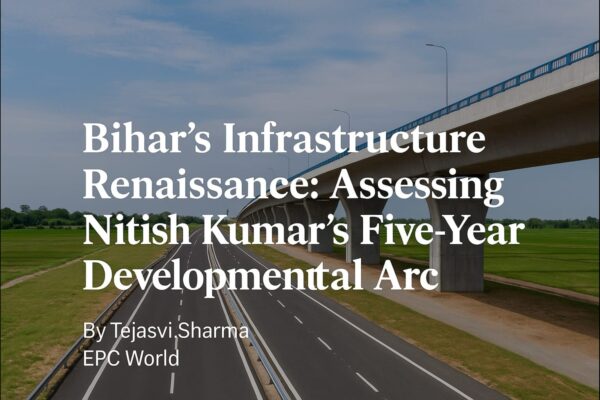BIM Mandates: A New Imperative in Public Infrastructure Delivery
by Tejasvi Sharma, Editor-in-Chief, EPC World
In the arc of technological transformation sweeping through India’s infrastructure sector, few developments are as consequential—or as quietly revolutionary—as the mainstreaming of Building Information Modelling (BIM) mandates in public procurement. Once regarded as a niche tool for elite design consultancies, BIM has evolved into a strategic imperative, woven into the contractual and operational fabric of large-scale infrastructure delivery. As public authorities confront the twin challenges of complexity and accountability, BIM offers a pathway to greater transparency, efficiency, and resilience.
Globally, governments have long recognised that fragmented design and construction processes are no longer tenable in an era where megaprojects routinely cross the ₹10,000-crore threshold. The United Kingdom was among the first to codify this recognition, implementing a Level 2 BIM mandate for all centrally funded projects in 2016. Subsequently, the European Union, Singapore, and Scandinavian nations have institutionalised BIM as a non-negotiable standard in public tenders. These policies have yielded measurable dividends—reducing rework by up to 30%, improving cost predictability, and shortening delivery timelines.
India has taken significant steps to align its procurement frameworks with these global benchmarks. The Central Public Works Department (CPWD), the nodal agency for government construction, issued its BIM Guidelines in 2019, outlining protocols for design integration, clash detection, and asset lifecycle management. The guidelines stipulate that all projects exceeding ₹100 crore must incorporate BIM workflows across planning, design, construction, and operation. Simultaneously, agencies such as the National Highways Authority of India (NHAI) and Metro Rail corporations in Delhi, Mumbai, and Pune have begun embedding BIM deliverables in their tender documentation.
At the heart of this policy shift lies a recognition that infrastructure today is too capital-intensive and too visible to tolerate opacity. BIM enables a federated model where architects, engineers, contractors, and operators can co-create a single source of truth. For public infrastructure, this means fewer claims and disputes, more transparent audit trails, and better alignment between funding milestones and physical progress. It is no coincidence that in recent NHAI expressway contracts, digital twins—dynamic replicas of constructed assets—are increasingly being paired with BIM models to enable predictive maintenance and lifecycle costing.
Yet while the policy architecture is gathering momentum, the operational landscape is still evolving. Many EPC contractors and subcontractors, especially those operating outside Tier 1 metros, remain unfamiliar with open standards such as IFC and COBie, which are critical to interoperability. Software licensing costs, skills shortages, and cultural resistance continue to impede adoption. Industry experts argue that mandates, though necessary, are not in themselves sufficient to achieve meaningful transformation. Without parallel investments in training, capacity building, and digital infrastructure, BIM risks being reduced to a perfunctory compliance exercise rather than a catalyst for value creation.
The Government of India has signalled its intent to address these bottlenecks. The National BIM Platform, now under development, aims to standardise workflows, certify professionals, and create a repository of best practices. There are also proposals to incentivise contractors through bonus payments linked to demonstrable efficiencies realised through BIM adoption. International funding agencies such as the World Bank and the Asian Development Bank are increasingly stipulating BIM integration as a precondition for financing, further reinforcing its inevitability.
As India marches towards a $5 trillion economy, the stakes for infrastructure delivery have never been higher. The country’s success will be measured not merely by kilometres of expressways or cubic metres of concrete but by the maturity of its processes and the transparency of its outcomes. In this context, BIM mandates are more than a regulatory footnote; they are a declaration of intent. They signal a future where data-rich, digitally coordinated delivery is no longer an aspiration but an operational baseline. For public authorities and private contractors alike, the imperative is clear: adapt or be left behind.
Tags
















